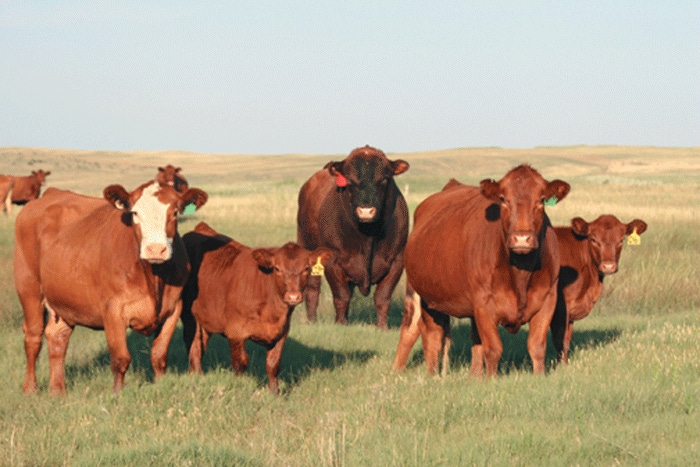
A record-breaking drought across Texas and much of the Southwest and reactions to a shortage of forage acres have caused cattle inventories in Texas and across the U.S. to fall to their lowest levels since at least 1952. The latest USDA analysis of the cattle inventory also indicates the current calf crop is the lowest since 1950.
The USDA's National Agricultural Statistics Service (NASS) released their cattle production numbers and values of all cattle and calves in January indicating the inventory of all U.S. cattle and calves in the U.S. as of Jan. 1, 2012, totaled 90.8 million head, a drop of 2 percent below last year’s beginning inventory. In Texas alone the herd dropped 11 percent or 1.4 million head, the biggest decline in more than 150 years. Oklahoma is down by 12 percent on all cattle and calves since numbers reported in January 2011.
In response to the report, cattlefutures in Chicago surged to a record $1.29675 a pound on Jan. 25.
The news comes as no surprise after Texas experienced its driest year on record in 2011. The drought decimated pastures and forced ranchers to sell, slaughter or transfer cattle out of state rather than incur elevated feed costs driven by corn prices, which reached an all time high last year. Also contributing to lower inventories was a shortage of adequate forage in Texas to sustain the herd.
But economists say last year’s drought and the movement of cattle out of state wasn’t the only contributing factor to smaller cattle inventories. Contributing to the decline were more beef cow slaughter numbers, a trend started as early as 2006 as production costs escalated, fueled by higher feed costs. And herd liquidation has been ongoing ever since.
“The drought is just the last in a series of events that have hurt the industry,” says Dr. Derrell Peel, Oklahoma State University Extension livestock marketing specialist. “The timing of the drought couldn’t have been worse. We didn’t get into this predicament overnight.”
Texas AgriLife Extension agriculture economist Stan Bevers says the severity of the drought and ever increasing input costs are forcing Texas cattle raisers to face a hard reality.
“Whether or not we see continued reductions in cow numbers in Texas depends on the weather. Another year of drought and herds are going to get even smaller. But even with better than expected rains in December and January, and even if the drought breaks this spring and summer and substantial rainfall helps to bring back forage acres, I don’t see a major rebuilding of the herd this year. We may even see further declines,” Bevers reports.
Higher input costs
He says input costs, which have skyrocketed over the last five years, will continue to rise, and in spite of higher beef prices, rebuilding a herd will be limited by higher prices for breeders and stockers.
“One problem I see is we have maximized productivity of a cow, so as input costs increase and productivity remains the same, we may reach maximum investment, the total amount a producer is willing to pay to rebuild his herd. Instead of rebuilding cow inventories, this could result in even smaller herds,” Bevers adds.
While the USDA report last month shows overallcattle inventory numbers and values of all cattle and calves were down nationwide, Texas and Oklahoma, two of the hardest hit by the drought, had other significant setbacks.
In the number of beef cow replacements (heifers at 500 pounds or more) since January a year ago, Oklahoma is down 15 percent. Texas is down 10 percent.
In calves under 500 pounds, Oklahoma is down 14 percent from last year at this time, while Texas is down 15 percent. A year ago, in January 2011, the calf crop total was down 3 percent in both Oklahoma and Texas.
The number of cows that have calved in Texas is down from 2011 numbers by 12 percent. Oklahoma is down in the same category by 14 percent.
Economist say a costly emergency solution for Texas cattle producers suffering drought conditions last year was to transport large numbers of cows from Texas to other states where pastures could support grazing and where forage costs were lower. While this resulted in lower numbers of cows in Texas and Oklahoma, some states, like Nebraska, actually increased cow numbers.
In Nebraska, cattle inventories increased 4 percent, or 250,000 for the year, the most for any state, putting it ahead of Kansas as the second largest cattle producing state. As Texas cattle arrived in the state however, many Nebraska landowners were concerned over the effect it may have on real estate markets and row crop production.
The largest destination states for Texas breeding cattle last year were New Mexico, Nebraska, Florida, South Dakota and Kansas. Those states were also the top destinations for Texas cattle in 2010.
About the Author(s)
You May Also Like






